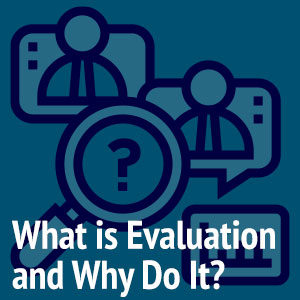 Organizations vs. Programs
Organizations vs. Programs
Organizations are social collectivities that have: members/employees, norms (rules for, and standards of, behavior), ranks of authority, communications systems, and relatively stable boundaries. Organizations exist to achieve purposes (objectives, goals, and missions) and usually exist in a surrounding environment (often composed of other organizations, individuals, and institutions.) Organizations are often able to achieve larger-scale and more long-lasting effects than individuals are able to achieve. Organizations can take a variety of forms including corporations, non-profits, philanthropies, and military, religious, and educational organizations.
Programs are discreet, organized activities and actions (or sets of activities and actions) that utilize resources to produce desired, typically targeted, outcomes (i.e., changes and results). Programs typically exist within organizations. (It may be useful to think of programs as nested within one or, in some cases, more than one organization.) In seeking to achieve their goals, organizations often design and implement programs that use resources to achieve specific ends for program participants and recipients. Non-profit organizations, for example, implement programs that mobilize resources in the form of activities, services, and products that are intended to improve the lives of program participants/recipients. In serving program participants, nonprofits strive to effectively and efficiently deploy program resources, including knowledge, activities, services, and materials, to positively affect the lives of those they serve.
What is Program Evaluation?
Program evaluation is an applied research process that examines the effects and effectiveness of programs and initiatives. Michael Quinn Patton notes that “Program evaluation is the systematic collection of information about the activities, characteristics, and outcomes of programs in order to make judgements about the program, to improve program effectiveness, and/or to inform decisions about future programming. Program evaluation can be used to look at: the process of program implementation, the intended and unintended results produced by programs, and the long-term impacts of interventions. Program evaluation employs a variety of social science methodologies–from large-scale surveys and in-depth individual interviews, to focus groups and review of program records.” Although program evaluation is research-based, unlike purely academic research, it is designed to produce actionable and immediately useful information for program designers, managers, funders, stakeholders, and policymakers.
Organization Development, Strategic Planning, and Program Evaluation
Organization Development is a set of processes and practices designed to enhance the ability of organizations to meet their goals and achieve their overall mission. It entails “…a process of continuous diagnosis, action planning, implementation and evaluation, with the goal of transferring (or generating) knowledge and skills so that organizations can improve their capacity for solving-problems and managing future change.” (See: Organizational Development Theory, below) Organization Development deals with a range of features, including organizational climate, organizational culture (i.e., assumptions, values, norms/expectations, patterns of behavior) and organizational strategy. It seeks to strengthen and enhance the long-term “health” and performance of an organization, often by focusing on aligning organizations with their rapidly changing and complex environments through organizational learning, knowledge management, and the specification of organizational norms and values.
Strategic Planning is a tool that supports organization development. Strategic planning is a systematic process of envisioning a desired future for an entire organization (not just a specific program), and translating this vision into broadly defined set of goals, objectives, and a sequence of action steps to achieve these. Strategic planning is an organization’s process of defining its strategy, or direction, and making decisions about allocating its resources to pursue this strategy.
Strategic plans typically identify where and organization is at and where it wants to be in the future. It includes statements about how to “close the gap,” between its current state and its desired, future state. Additionally, strategic planning requires making decisions about allocating resources to pursue an organizations strategy. Strategic planning generally involves not just setting goals and determining actions to achieve the goals, but also mobilizing resources.
Program evaluation is uniquely able to contribute to organization development–the deliberately planned, organization-wide effort to increase an organization’s effectiveness and/or efficiency. Although evaluations are customarily aimed at gathering and analyzing data about discrete programs, the most useful evaluations collect, synthesize, and report information that can be used to improve the broader operation and health of the organization that hosts the program. Additionally, program evaluation can aid the strategic planning process, by using data about an organization’s programs to indicate whether the organization is successfully realizing its goals and mission through its current programming.
Brad Rose Consulting works at the intersection of evaluation and organization development. While our projects begin with a focus on discrete programs and initiatives, the answers to the questions that drive our evaluation research provide vital insights into the effectiveness of the organizations that host, design, and fund those programs. Findings from our evaluations often have important implications for the development and sustainability of the entire host organization.

Resources:
Organizations: Structures, Processes, and Outcomes, Richard H. Hall and Pamela S Tolbert, Pearson Prentice Hall, 9th edition.
Utilization Focused Evaluation, Michael Quinn Patton, Sage, 3rd edition, 1997
Organization Development: What Is It & How Can Evaluation Help?
Organizational Development Theory
Strategic Planning, Bain and Co. 2017
What a Strategic Plan Is and Isn’t
Ten Keys to Successful Strategic Planning for Nonprofit and Foundation Leaders
Types of Strategic Planning
Understanding Strategic Planning
Five Steps to a Strategic Plan
Five Steps to a Strategic Plan
The Big Lie of Strategic Planning, Roger L. Martin, Harvard Business Review, January-February 2014


